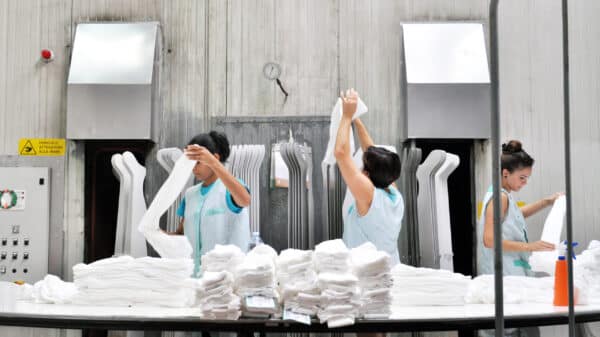President Donald Trump made a significant announcement last Thursday, revealing that the French shipping giant CMA CGM would be investing a massive $20 billion into the United States. The purpose of this investment? To bolster shipping logistics and develop new terminals. This news has stirred excitement, and you can certainly understand the reason why—this is more than just a sum of money; it’s a promise of growth and job opportunity at a time when both are desperately needed.
During a press conference, Trump mentioned that he plans to unveil a new initiative for domestic shipbuilding in the coming days. We can only imagine the level of anticipation among U.S. workers and shipping industry professionals alike as the potential for growth unfolds. This initiative is expected to include several financial incentives aimed at rejuvenating the stagnant shipbuilding sector.
CMA CGM, a powerhouse in the shipping industry and the third-largest container shipping line worldwide, is bringing a storm of investment to the shores of America. Rodolphe Saade, the CEO of CMA CGM, who was present in the Oval Office during Trump’s announcement, spoke directly about the positive ripple effects of this investment—predicting it will create around 10,000 jobs. It’s hard not to reflect on what that means for communities and families relying on the kind of stability that good jobs can provide.
There’s no denying that the shipping industry has been on shaky ground lately, particularly with the uncertainties surrounding the Trump administration’s proposed tariffs on imports and port fees for vessels manufactured in China. These changes could drastically alter the shipping landscape, affecting many firms and their bottom lines.
CMA CGM has ambitious plans for this $20 billion investment over a span of four years. Among these plans is an expansion of container ports, coupled with the development of an air cargo hub located in Chicago—a move that could elevate trade operations and logistics significantly. Supporting this hub, CMA CGM plans to introduce five new Boeing 777 freighters into its operations, all flown by American pilots. This is not just about cargo; it’s about elevating American jobs and aviation capabilities.
During the meeting at the White House, Saade emphasized the urgency of revitalizing U.S. shipbuilding capabilities. He indicated that CMA CGM is not only focused on expanding its fleet but also on increasing its number of U.S.-flagged vessels from 10 to 30. This shift is a promising sign for a nation that has struggled with lagging shipbuilding capacity compared to its international competitors, particularly China.
While a White House document revealed plans for imposing fees on imports of Chinese-made ships, there’s a glimmer of hope as the administration also aims to offer tax credits to create a thriving domestic shipbuilding industry. It feels as if they’re setting the stage for a renaissance in American shipping—a possibility that’s exciting for anyone who understands the pivotal role of maritime trade in our everyday lives.
CMA CGM’s presence in U.S. ports, notably in New York and Los Angeles, exemplifies its commitment to America. These ports were part of multi-billion dollar investments made during a shipping boom that followed the COVID-19 pandemic. It’s worth noting that CMA CGM has become the largest cargo carrier for retail giant Walmart, which adds yet another layer of importance to their operations in the U.S. market.
However, it’s not all smooth sailing. Just last week, the company cautioned that U.S. port fees on ships built in China could dramatically impact shipping lines, highlighting the precarious balance in this industry. As the winds of change loom on the horizon, it’s crucial for both business leaders and policymakers to navigate these waters carefully, ensuring that such investments translate into real, tangible benefits for working Americans seeking stability.
In summary, as CMA CGM dives headfirst into this extensive investment, many will be watching closely to see how it unfolds. The stakes are high, and the hopes of thousands hang in the balance. It’s a pivotal moment—not just for the shipping industry but for the entire U.S. labor market. Only time will tell how this chapter will be written, but it certainly feels like the opening lines of a promising story, one that could lead to recovery and resurgence for many.
Image Source: Chip Somodevilla / Shutterstock





























